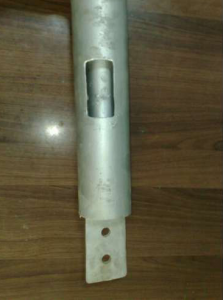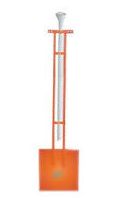Types of earthing
Category: Electrical Articles
3 May 18
There are two types of earthing
- Rod and pipe earthing
- Plate earthing
Rod and pipe earthing
- These electrodes shall be made of metal rod or pipe having a clean surface not covered by paint, enamel or poorly conducting material.
- Rod electrode of the sheet or galvanized iron shall be at least 16mm in diameter and those of copper shall be at least 12.5mm in diameter.
- Pipe electrode shall not be smaller than 38mm internal diameter is made of galvanized iron or sheet and 100mm internal diameter is made of cast iron electrodes shall, as far as practicable, be embedded below permanent moisture level.
- Deeply driven pipes and rods are, however effective where the soil resistively decreases with depth or where substratum of low resistivity. Occurs at a depth greater than those rods and pipes are normally driven.
- Pipe Earthing is the best form of earthing and is very cheap in cost. In this method of earthing, a galvanized and perforated pipe of approved length and diameter is placed upright in a permanently wet soil.
Plate earthing
- In Plate Earthing an earthing plate of copper of dimensions 60cm×60cm×3mm or of galvanized iron of dimensions 60cm×60cm×6mm is buried into the ground with its face vertical to a depth of not less than 3 meters from ground level.
- The copper plate and copper wire are usually not employed for grounding purposes because of their higher cost.



